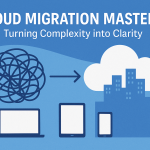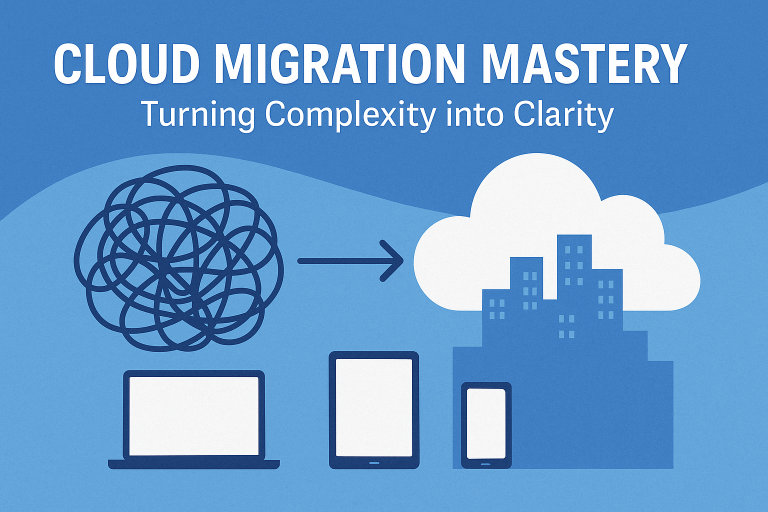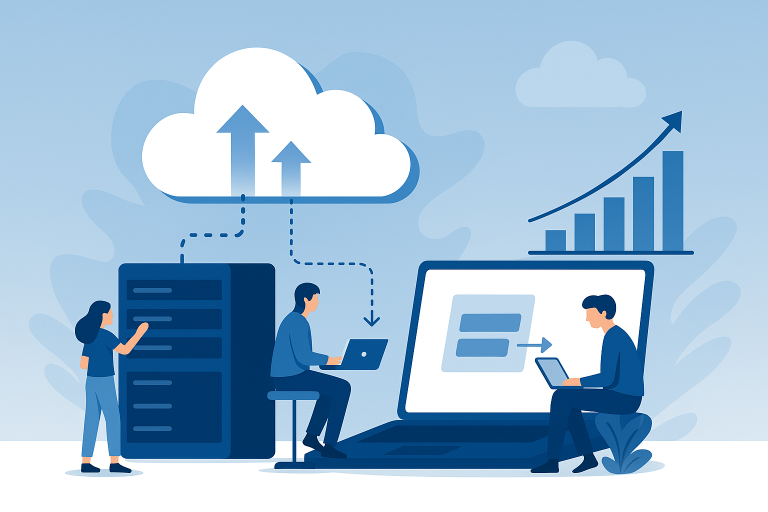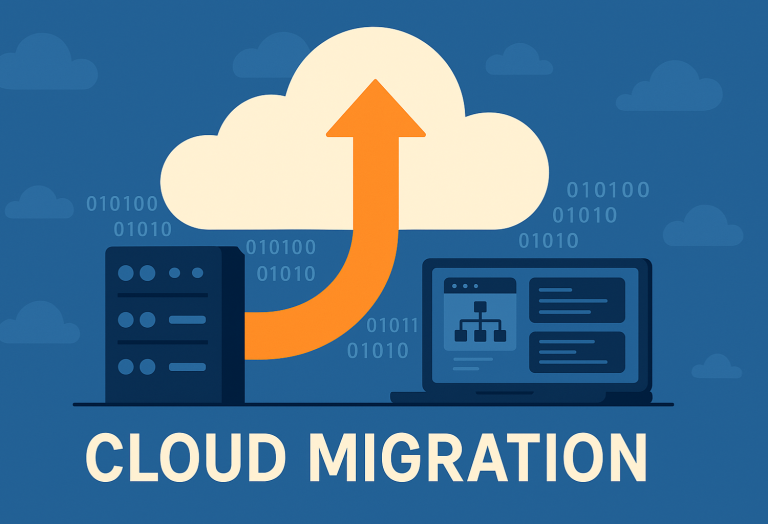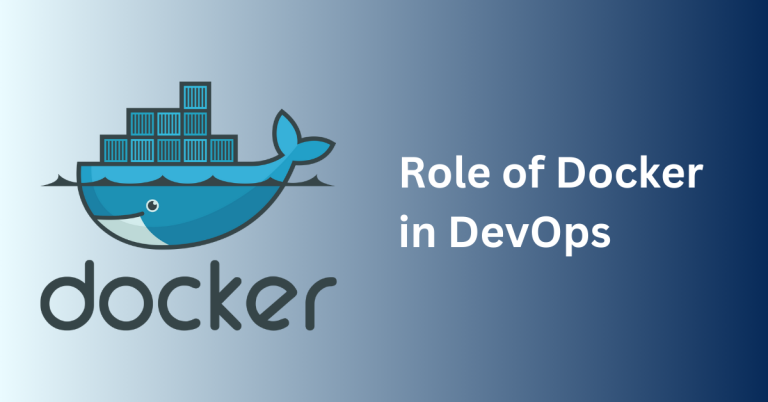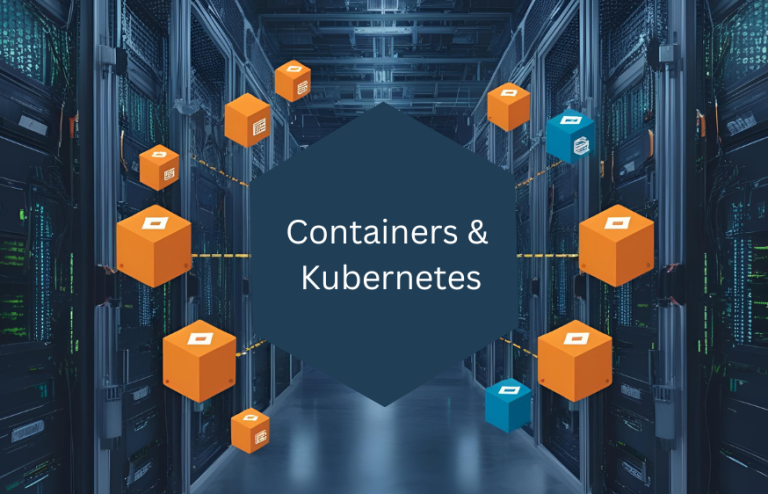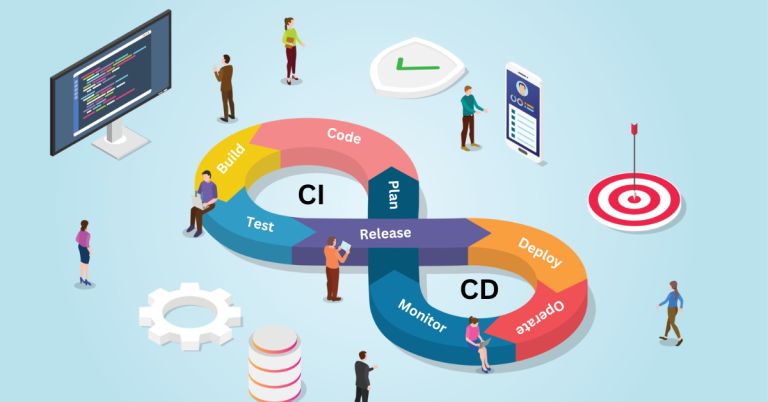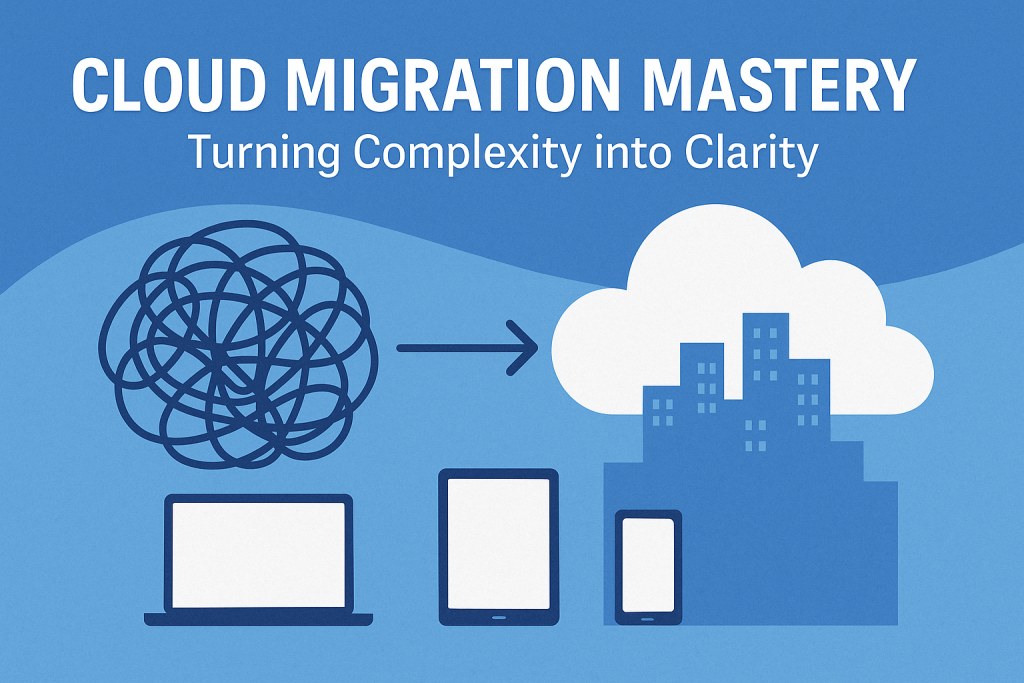
Achieving cloud migration mastery is crucial for digital transformation—it’s the key to unlocking agility, scalability, and innovation. However, the journey toward the cloud is rarely linear or simple. Instead of a seamless shift, most organizations face unexpected complexity, operational disruptions, and architectural chaos.
Even though there is widespread enthusiasm for cloud adoption, enterprises frequently underestimate the effort required to transform legacy systems into modern cloud-native infrastructures. From hidden dependencies and overlooked security implications to misaligned strategies and cultural friction, the challenges are both real and far-reaching.
Fortunately, with the right strategy, governance, tools, and mindset, cloud migration can evolve from a daunting, risk-laden venture into a clear, purposeful re-architecture of the digital backbone. In this guide, we aim to illuminate the common pitfalls as well as the structured pathways to successful cloud transformation.
Problem #1: The Common Pitfall: Starting Without a Clear Strategy
One of the most frequent missteps in cloud migration is initiating the process with a vague or incomplete strategy. Too often, IT leaders adopt a “just move it” approach, assuming that workloads will inherently perform better in the cloud. As a result, this assumption leads to disjointed migrations that, in turn, result in technical debt, cost overruns, and long-term manageability issues.
Symptoms of Poor Planning:
- VM sprawl and lack of resource tagging.
- Ambiguous ownership of assets and services.
- Ineffective cost control due to unmonitored usage.
- Unexpected downtime and degraded performance caused by missed dependencies.
- Latency and security issues, particularly when hybrid deployments involve legacy VPNs, static IPs, or outdated DNS configurations.
In essence, treating cloud migration as a simple lift-and-shift project creates more problems than it solves. Without a well-articulated framework, the transformation effort ultimately fails to deliver meaningful business value. Therefore, a strategic, well-planned approach is essential to realizing the full potential of cloud adoption.
Solution: Strategic Planning Anchored by Policy and Automation
In order to transform cloud migration from a tactical project into a strategic re-architecture, enterprises need a foundation built on structure, clarity, and repeatable standards.
1. Strategic Cloud Framework
Your cloud journey must start with well-defined objectives and architectural principles that align with broader business goals.
Key elements to include:
- Business Drivers: Whether it’s reducing costs, increasing agility, or modernizing legacy systems, every workload should tie back to a business priority.
- Operating Models: Choose between centralized governance or decentralized self-service platforms based on your team’s maturity.
- Blueprints: Use templates for infrastructure, security, and performance to ensure consistency across environments.
- Performance Metrics: Track KPIs like time-to-market, total cost of ownership (TCO), and system uptime to measure impact.
2. Governance Without Bureaucracy
Governance is not about slowing teams down—it’s about protecting your cloud environment while enabling innovation.
Best practices include:
- Enforce tagging policies for environment, owner, cost center, and project.
- Set budget alerts and expiration timers for unused resources.
- Apply security baselines with consistent IAM roles, encryption standards, and audit trails.
- Define RBAC models that enforce least privilege access.
3. Automation: The Cloud’s Greatest Ally
Manual processes don’t scale in cloud environments where workloads are dynamic and ephemeral. Automation ensures accuracy, compliance, and speed.
Recommended automation strategies:
- Static Analysis: Identify compatibility issues in legacy applications.
- Runtime Profiling: Monitor live workloads to recommend optimal resource sizing.
- Dependency Scanning: Uncover internal application ties—such as database links, DLL calls, or shared authentication layers.
Helpful Tools:
- Azure Migrate
- AWS Application Discovery Service (ADS)
- Dynatrace
- CloudHealth
- Cloud Custodian
Decision Framework: The 6 R’s of Cloud Migration
- Rehost: Lift and shift.
- Refactor: Make minimal changes to gain cloud compatibility.
- Rearchitect: Redesign to optimize performance or resilience.
- Rebuild: Start from scratch using cloud-native technologies.
- Replace: Swap with SaaS offerings.
- Retire: Decommission unused or outdated systems.
Cloud migration services help organizations transition their applications, data, and workloads to cloud environments in a structured and efficient manner.
Sample Policy as Code:
policy:
name: enforce-migration-tagging
condition:
– resource.type == VM
– tag.environment == null
action:
– block-migration
– notify: cloud.security@company.com
Problem #2: Poor Discovery and Dependency Awareness
Another major stumbling block, however, is the failure to fully understand how systems interconnect. In reality, applications rarely operate in silos. Instead, they share data sources, network layers, and authentication mechanisms. Consequently, migrating one component without recognizing its ties to another can bring entire services down.
Real-World Consequences:
- Moving a reporting dashboard might break payroll processing if both rely on the same backend.
- A hardcoded DNS (e.g., 10.10.10.5) becomes unreachable post-migration, causing silent failures.
- Legacy dependencies go unmonitored due to lack of East-West traffic visibility or service maps.
Solution: Dependency Mapping and Logical Migration Waves
To ensure a smooth transition, organizations must understand the entire ecosystem and use observability tools to identify both visible and hidden dependencies.
Tools to consider:
- Dynatrace: Real-time dependency visualization.
- Device42: Detailed infrastructure maps and asset intelligence.
- Turbonomic: Resource management and optimization.
These tools can help you identify:
- Hardcoded configurations that won’t translate to the cloud.
- Shadow IT systems that interact with mission-critical apps.
- Shared services like databases or identity providers.
Staggered Migration Through Logical Waves
Segment workloads into manageable groups, based on their complexity and dependencies.
Migration Waves:
- Low-risk applications with minimal interdependencies.
- Moderate complexity apps with documented service ties.
- High-touch, regulated, or mission-critical systems.
This approach minimizes risk and allows real-time learnings to influence future phases.
Security and Compliance: Bake It In, Don’t Bolt It On
Security must be foundational—not an afterthought.
Common Mistakes During Migration:
- Opening RDP ports to the public due to default settings.
- Retaining default admin passwords post-deployment.
- Granting excessive IAM privileges.
- Deploying web apps without securing APIs or using WAFs.
How to Build Secure Cloud Environments
- Use Infrastructure as Code (IaC) tools like Terraform to define and enforce configurations.
- Leverage Policy as Code (PaC) using engines like OPA (Open Policy Agent) to automate security governance.
Example OPA Policy:
deny[msg] {
input.resource.type == “vm”
input.resource.network.public_ip == true
msg := “VMs with public IPs are not allowed during migration”
}
Tie Security to Visibility
Integrate cloud-native tools and third-party solutions:
- SIEM: Microsoft Sentinel, Splunk, or QRadar for threat detection.
- CASB: Zscaler ZIA, Netskope for monitoring user access and preventing data leaks.
Cross-Functional Alignment: Beyond Just IT
Cloud transformation is an organizational shift, not just a technical one. Migration success relies on collaboration across IT, business units, developers, and security teams.
Keys to Operational Cohesion:
- Involve business stakeholders early to prioritize critical applications.
- Collaborate with network and cybersecurity teams for segmentation and access control.
- Train developers and ops in cloud-native tools, CI/CD pipelines, and cost-awareness.
Simulate and Stress-Test Your Assumptions
Use GameDays—planned failure simulations that mimic real-world disruptions—to identify untested dependencies or misconfigurations.
Final Thoughts: Migration as Reinvention, Not Replication
Cloud migration is a pivotal moment to re-architect systems, moving beyond legacy burdens to embrace adaptive infrastructure, autonomous operations, and programmatic governance. All too often, however, migrations replicate inefficiencies, bottlenecks, and hidden dependencies—transferring outdated patterns into modern platforms without meaningful transformation. In truth, the real value of cloud lies not in where systems run, but in how they are designed to evolve, scale, and respond in real-time to business and threat landscapes.
To fully unlock this potential, organizations must reframe cloud migration as a vehicle for modernization, marked by several foundational shifts:
- From Instinct to Intelligence: Replace tribal knowledge and undocumented assumptions with telemetry-driven decision-making, continuous baselining, and operational observability. Every architectural choice must be supported by empirical data, rather than familiarity.
- From Siloed Systems to Composable Infrastructure: Reimagine fragmented environments as composable units—loosely coupled, independently deployable, and resilient by default. Monolithic and stateful designs must give way to ephemeral, API-first ecosystems.
- From Reactive Controls to Policy-Driven Enforcement: Security and compliance must no longer remain afterthoughts or external checkpoints. Instead, they should be codified as first-class citizens—embedded through Infrastructure as Code (IaC), enforced via Policy as Code (PaC), and continuously validated via automated controls.
- From One-Time Projects to Continuous Optimization: Migration is not a finish line but the beginning of a lifecycle of ongoing enhancement. Cost governance, performance tuning, threat detection, and service agility should all be built into a feedback loop that continuously informs and improves architecture.
The path forward is not cloning the data center in the cloud but reimagining it as a software-defined, intelligent fabric. Managed cloud services accelerate this transformation, reducing operational burden while increasing agility.
Start with small pilots, test failure scenarios, and measure business impact. Cloud modernization becomes a cultural shift, transforming how teams think, systems evolve, and trust is built—it’s reinvention.
